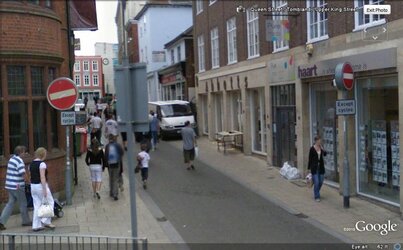Want Fairness and liability on the roads?
Try writing to your MP, I did. It is better than doing nothing...
Done. I have sent the following through
http://www.writetothem.com/
I have copied bits from the letter in the page you referenced; I hope they don't mind.
Dear David Crausby,
I am writing concerning the current state of affairs regarding the
treatment of vulnerable road users by a small but significant
proportion of motor vehicle drivers. My own experience as a cyclist,
commuting 25 miles round trip to work and back, is that there is at
least one incidence of a driver taking significant risks in relation to
my safety every day.
In this country, where the roads are shared by motor vehicles,
pedestrians and cyclists, it is clear that motor vehicles bring almost
all of the risk to the situation. The 2008 road casualty figures show
that 332 pedestrians were killed in car/pedestrian collisions, and in
car/cyclist collisions 52 cyclists were killed. In all 390 cases not
one car driver was killed. Amongst pedestrians, cyclists and car
drivers, it is clear that the car driver is the most likely party to
inflict injury or death upon the others.
Given this huge imbalance in risk, it is surprising that, in most such
incidents, the burden of proof when seeking redress currently rests on
the injured party to prove negligence on the part of the injuring
party. Since it is very difficult to prove negligence in such cases,
the personal risk to those motorists who do not show regard for the
safety of vulnerable road users is unlikely to be sufficient to
influence their behaviour and cause them to take more care. All this
does not seem fair to me.
The government claims to be concerned about the poor health of the
nation including the problem of rising levels of obesity, ecological
sustainability, and energy consumption, yet does not currently seem to
have the will to take the actions that would be necessary to encourage
a more active and sustainable lifestyle through activities such as
replacing car journeys with foot or bicycle journeys.
Given these points, could I please ask you to get in touch with the
Minister for Transport, the Minister for Road Safety and your party
colleagues on the Transport Select Committee. It would be much
appreciated if you could highlight to them, that we should subscribe to
a more civilised system that is favouring the vulnerable.
Liability should therefore be considered on a fair and proportionate
basis to provide legal protection to the vulnerable road user. This
could be achieved by establishing a hierarchy of care where the burden
of proof would always be on the user of the heavier vehicle (the party
more likely to cause injury or death), an approach sometimes referred
to as strict or presumed liability. This would show the commitment of
this Government to its agendas of societal and social fairness, healthy
living and ecological sustainability.
This principle of proportionality described above is in place in all
but five European countries. The UK being one of them; the other four
are Ireland, Romania, Cyprus and Malta.
Yours sincerely,



 Even more of a reason for this law to be changed!
Even more of a reason for this law to be changed!